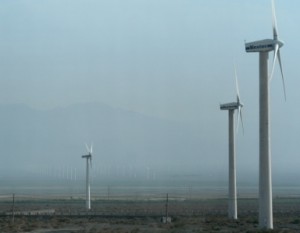Struggle at the Center of Asia: China vs. the Uighurs. Mike Jeffers Reports
The Uighurs, largely unknown to the West, made headlines in 2002 when U.S. forces detained several Uighurs in terrorist training camps in Afghanistan. They said they were not training to fight against the U.S. but instead were freedom fighters hoping to gain skills to fight Beijing’s control over Xinjiang. The Uighurs were about to be released after spending several years in detention at the Guantanamo Bay naval base.
Representatives from the Chinese government were given a chance to talk to them but human rights groups worried that China would arrest them – and possibly worse – if they were sent home. So in June 2009, U.S. lawmakers voted to send some of the detainees to Bermuda and others to the Pacific Island of Palau. This came after years of trying to find countries that would accept them.
Xinjiang is also home to ethnic Kazakhs, Kyrgyz, Uzbeks and Tajiks. Half the population in the region is Turkic Muslim. Many of those Muslims look toward Central Asia and the Middle East rather than China for spiritual and cultural guidance — which makes Beijing wary.
I spent a couple of days wandering around the Uighur and Han sections of Urumqi, exploring the famous great bazaar and the nearby Erdaoqiao Mosque. A Carrefour department store and a Kentucky Fried Chicken connected to the mosque belied any notion that the Uighurs controlled the commercial activity in Urumqi’s largest cultural site. In the shopping center, Xinjiang raisins, nuts, pomegranate juice, clothing, Uighur knives and clothing were for sale. Han vendors ran the booths in the best spots to attract foreign tourists.
Outside the central market is the Uighur quarter, where you can buy souvenirs and daily necessities. Here the traveler can get a taste of the Xinjiang of old, but the scene leaves little doubt about who is in charge. I decided to catch a bus from Urumqi to the oil boom town of Korla. As in the Middle East and Texas, oil here is at the heart of political power and maneuvering.
The landscape is spiked with symmetrical rows of towering German-designed wind turbines. There are a couple of fuel stops along the way where raisins and halal food are sold. Korla sprang from the desert in the 1950s after the Chinese discovered oil.
Modern Resources, Ancient Tensions
Xinjiang’s sprawling oil, natural gas, iron, coal and agricultural resources complicate matters. That trove of potential riches means ever more Han Chinese are arriving to take advantage. More roads are being built and more military bases, too. In the process, Uighurs and other minorities have been forcefully displaced.
Chinese authorities, for their part, have long suspected the Uighurs of separatist goals and links with Islamic extremists. Combine that history of tensions with the geographical and cultural distances involved, and it provides a clue as to why Beijing has not yet figured out how to peacefully assimilate its numerous ethnic minorities in western China.
Mountain ranges in the south and southwest separate Xinjiang from Tibet, India, Pakistan and Afghanistan. Mountains in the west and northwest provide a boundary between Xinjiang and Kyrgyzstan, Tajikistan and much of the Kazakh-China border. Jagged sawtooth formations surge up from the rocky terrain. Grooved by ancient oceanic erosion, they leave a mesmerizing first impression. As a result, it hardly seems like land worth fighting over.
Yet Beijing has a lot at stake here, juggling its economic imperative to exploit Xinjiang’s resources with the need to quell unrest and soothe relationships with neighboring energy-rich Muslim nations and even the United States. Economics and natural resources are driving forces in the region, similar to the way the Middle East is defined by oil.
According to official Chinese data, there are 730 million tons of iron ore in the region, which is a vital factor in China’s industrial and economic development. For some people in the region, the very survival of a long-lasting culture rests on the complex decisions made by Chinese leaders. As for the Uighurs, there are two dueling narratives about their relations with China.
